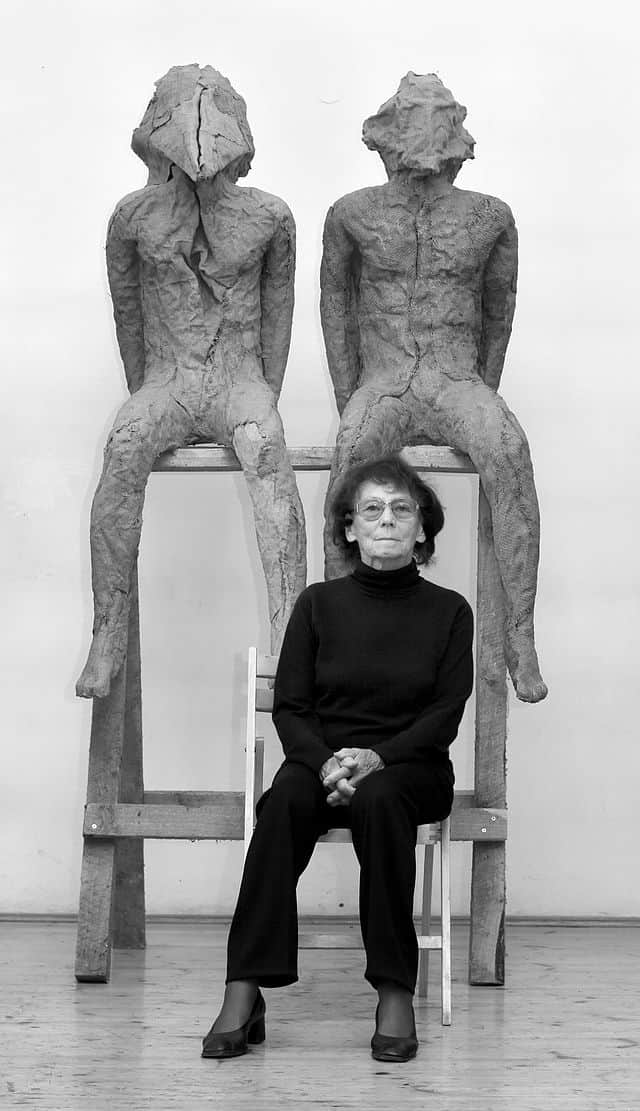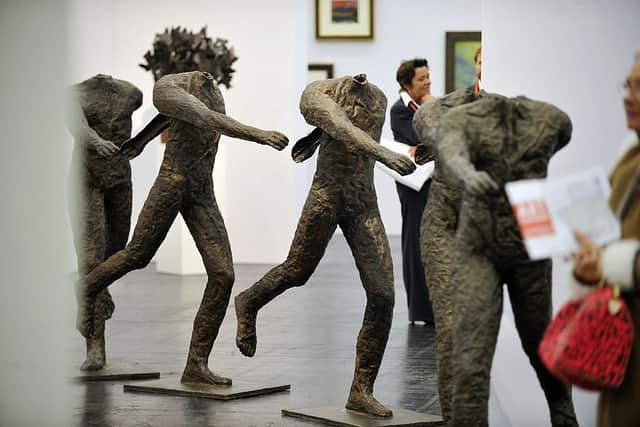Magdalena Abakanowicz: why is Google Doodle celebrating the Polish artist - is her work in the Tate?
and live on Freeview channel 276
Today, Tuesday 20 June, the iconic Google Doodle celebrates the life and career of Polish artist Magdalena Abakanowicz. The date that a Google Doodle appears on the search engine’s homepage is always significant to the subject in question, with today being no exception - the Doodle marks what would have been Abakanowicz’s 93rd birthday.
From November 2022 until May earlier this year, the Tate Modern in London had run an exhibition on the artist, called Every Tangle of Thread and Rope.
Advertisement
Hide AdAdvertisement
Hide AdThis is everything you need to know about the pioneering artist who ushered in a new category of art known as Abakans.
Who was Magdalena Abakanowicz?
Abakanowicz was a Polish sculptor and fiber artist, best known for her use of textiles and outdoor installations.
She was born on 20 June 1930, to parents Helena Domaszewska and Konstanty Abakanowicz. At the age of nine, Nazi Germany invaded and occupied Poland, and for years Abakanowicz and her family lived on the outskirts of Warsaw before joining the Polish resistance. When she was 14, Abakanowicz became a nurse’s aide in a hospital in Warsaw.


After the war ended, Abakanowicz and her family moved to Tczew in northern Poland to start a new life. She completed part of her high school education in Tczew from 1945 to 1947 before finishing it in Gdynia. After graduating in 1949, she enrolled in the Academy of Fine Arts in Sopot before moving back to Warsaw the following year to study at the Academy of Fine Arts, which was the leading art school in Poland.
Advertisement
Hide AdAdvertisement
Hide AdWhilst at university in Warsaw, Abakanowicz took a number of textile design classes which saw her learn the art of weaving, screen printing and fiber design - all of which would later greatly influence her work.
What was she known for?
In the 1960s, Abakanowicz created the Abakans, a series of soft sculptures which made her an internationally acclaimed artist after winning the top prize at the 1965 São Paulo International Art Biennale.
Inspired by “The Crowd” sociological phenomenon, which says that a crowd acts as a whole and that people lose their individuality within one, Abakanowicz created her collection called Agora, which is made up of 106 iron cast figures. The piece is permanently installed at Chicago Grant Park.


Throughout the course of her career, Abakanowicz earned a number of awards for her work, including:
- Herder Prize, Vienna, Austria (1979)
- Jurzykowski Prize, New York City (1982)
- Award for Distinction in Sculpture, granted by the Sculpture Center, New York (1993)
- Commander Cross with Star of the Order of Polonia Restituta (1998)
- Pour le Mérite for Sciences and Arts, Berlin, Germany (1999)
- Officier de L'Ordre des Arts et des Lettres, Paris, France (1999)
- Leonardo da Vinci World Award of Arts, Norway (1999)[27]
- Knight of the Order of Merit of the Italian Republic (2000)
- Visionaries! Award granted by American Craft Museum (2000)
- Lifetime Achievement in Contemporary Sculpture Award, International Sculpture Center, (Hamilton, NJ, USA) (2005)
- Germany's Star of the Grand Cross for Service to Germany (2010)
When did she die?
Abakanowicz died at the age of 86, on 20 April 2017 in Warsaw, Poland. She died following a long illness her husband, Jan Kosmowski, said at the time.
Comment Guidelines
National World encourages reader discussion on our stories. User feedback, insights and back-and-forth exchanges add a rich layer of context to reporting. Please review our Community Guidelines before commenting.
